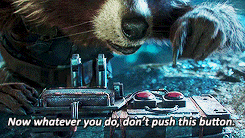How to Stop Worrying and Love Feedback-Driven Design
Good news – Hawaii did not have missiles launched against it. (For those who missed the story, there was an emergency alert that went out to Hawaiians warning of an imminent missile attack that stood for 37 minutes on the island.)
Important questions need to be asked in the wake of this, including “will Hawaii have a baby boom in, oh, about nine months?”.
But the one that I’ve been thinking about is, because I’m a nerd, a user design one. Initially, officials said an operator “hit the wrong button.” Then, it was reported that the operator selected the wrong option from a dropdown. Now, as of Monday, we have a screenshot (from Hawaii News Now) of what the screen looked like (with the addition of a new false alarm option):

This is clearly unclear. If you want to test the system with a drill, should you choose false alarm, test message, drill, or something else? And, as my wife Meg put it, “if I want to buy a $.99 song on iTunes, I have to confirm that’s really what I want to do. They don’t do that for a missile alert?”

Anyone trying to use this system for the first time would have seem this as a potential disaster in the making. That person, if asked, could easily say that the system should be changed. And yet it persisted.
My guess is that most of our online donation forms have this sort of easily noticeable and fixable issue. But you don’t notice because 1) you are used to the system as it is, 2) you can’t possibly think of every possible way someone may try to use your system, 3) the issue is for a minority of users, and 4) feedback systems aren’t in place to get you insights from the people who have problems on your system.
And if you think your site is immune, try these scenarios as a user:
- Your name is John Doe and your wife is Jane Roe. You would like to use your credit card to donate – which is in your name – but have both of you acknowledged.
- You would like to donate in memory of your sainted aunt Anita Sue Donim. You want to give a one-page printed note of this to your uncle Alan Smithee in a card, because Alan doesn’t use email. Extra degree of difficulty: you’ve already hit the donate button on the home page.
- You have $31.88 in your PayPal account from selling your House of Cards action figures in disgust. You would like to donate this balance without using your credit card.
- You want your gift to go to one case or one area of the mission, rather than into the general fund.
- You would like to increase the amount of your monthly gift online and have it occur on the first of every month.
These are all things people want to do regularly. And yet at least one of them is likely difficult, if not impossible, for your donors to do.
Now, obviously, all of Hawaii won’t think the end times are nigh if someone hits the wrong button on a donation form. But you may not just miss a donation; you may be burning donors.
You may have made a strategic choice to (for example) not have restricted gifts on your site. That’s a fine decision and one many organizations have made. But how do you make that cost-benefit analysis without knowing how many people want to designate their gift (the benefit in that cost-benefit analysis)?
The good news is that your donors are willing – no, eager – to tell you what processes you can improve and which things confuse them. If you listen and iterate improvements, you’ll see both conversions and satisfaction heading up.
PS. As a side note, don’t put your password on a sticky note on your monitor, then take a picture of it:
A password for the Hawaii emergency agency was inadvertently published in an @AP photo in July 2017 after being written on a post-it note. https://t.co/nQSzg8rX3q pic.twitter.com/No2ECUXOQy
— Rob Price (@robaeprice) January 16, 2018


